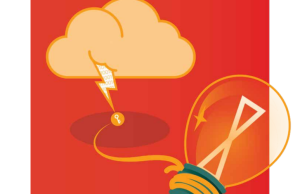Charity marketing campaigns usually generate more “effects” than those of other campaigns. An effect is defined as a desired result, whether a donation, brand recognition, brand trust perception, recommendations, an inquiry, traffic generation, a download or whatever other goals a campaign might have. In fact, charity campaigns lag only retail efforts in terms of generating campaign response.
But the effectiveness of charity campaigns within the United Kingdom has been diminishing during the past two years. They hit a high of, on average, 3.4 effects (as measured through mail responses, recall studies, web clicks, email opens and other key performance indicators) during the coronavirus’s early phase in 2020. Since then, effects generated by charity campaigns have fallen to an average of 2.3 per campaign.
Even worse, the number of response effects — those generated by direct response campaigns, as opposed to brand recall or brand association metrics — has halved from 2.6 in 2020 to 1.3 in 2021, according to Meaningful Marketing Measurement: Charitable Sector Focus, a new study from the London-based Data & Marketing Association (DMA)
Some of this can be attributed to charities having an easy access to messaging recipients, with pandemic shelter-in-space restrictions providing a captive audience. But these same restrictions, as time went on, prevented charities from using fundraising events, meetups and other out of home activities. And when restrictions were loosened, potential targets were making up for their isolation time by engaging in a wide variety of activities that were not charity-focused.
This trend can be reversed, if charity marketers are willing to consider adjusting their strategies. Several strategic considerations impact a campaign’s effectiveness. The majority of charity campaigns are short-term efforts which tap out after three months. The study authors acknowledge that even within this short duration charity campaigns are still more effective than many other types, long-term efforts. But they also note that the 8% of charity campaigns that last upward of a year, such as those with a single targeted message or focus, generate the most powerful branding and effect/response rates.
The study covered the entirety of the pandemic period to date, along with 2019 as a baseline year. It was not business as usual for charity campaigns during this period. The number of campaigns with dual objectives, such as branding and response, doubled to 28% during the pandemic, while the percentage of those focused purely on generating a response fell from 64% to 42%. As the study authors noted, “[c]ampaigns with a dual objective are more effective than those with a singular response or brand objective, but with dual-objective campaigns still in the minority, a greater shift in thinking is required”.
While it remains true that any organization’s house file represents its most responsive audience, report authors cautioned against over-mining this source, even during turbulent times. “There are only so many additional donations than can be expected from existing donors already invested in a cause. Exploring new audiences and targeting the entire addressable market is a cornerstone of how brands grow.”
Of late, charities have adjusted their retention/acquisition mix. The percentage of pure retention campaigns fell from 15% to 4% between the 2017-2019 and 2020-2021 periods, while the percentage of those with a dual acquisition and retention objective increased from 22% to 36% between the two time periods. The percentage of pure acquisition campaigns slipped from 63% to 60%.
The study confirmed a marketing truism: in addition to touching recipients often, they should be touched through multiple channels. Nonprofit marketers know this: two thirds of those analyzed run campaigns across multiple channels, with those employing three or more continuing to gain effectiveness over those relying on only one or two. As the effectiveness of charity campaigns declines, the study authors urge charity marketers to add channels.
Mail provides the most effective channel for driving immediate responses for nonprofits. But television was the overall best in show cannel. “Whilst TV and digital display are also effective channels in driving immediate response, TV also drives an above-average response and above-average brand effects,” the study authors wrote. “If planners are to give more consideration to campaigns with dual brand and response objectives, then TV becomes a vital component of campaign planning.”
That’s a sit-up-and-take-notice finding for nonprofits, many of which struggle with branding campaigns designed to stimulate awareness, consideration and donation intent, according to the study authors.
The DMA based its research on 1,057 campaigns analyzed within its Intelligent Marketing Database, 138 of which were charity campaigns. The full report is available here:
https://dma.org.uk/research/meaningful-marketing-measurement-charity-sector-focus








